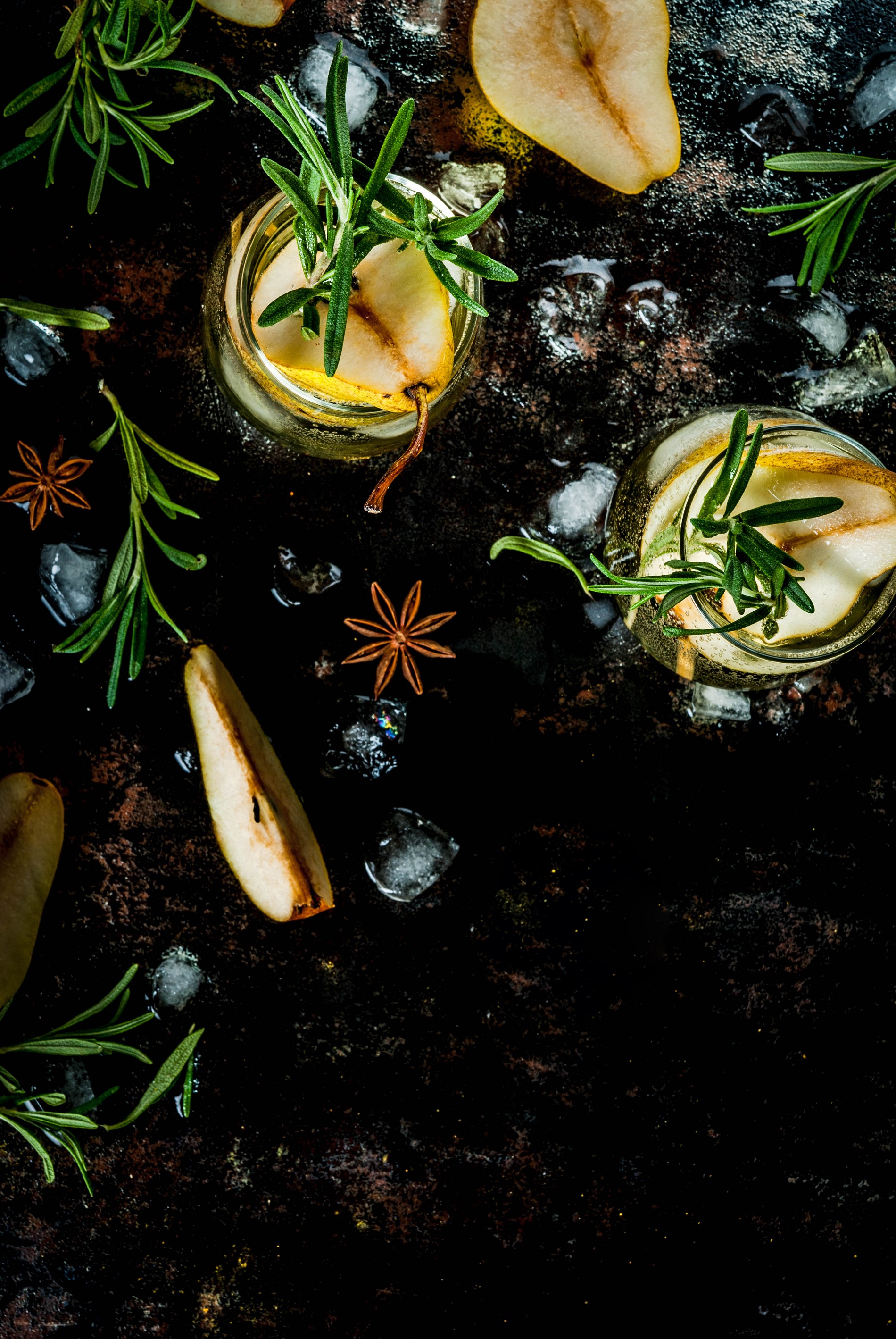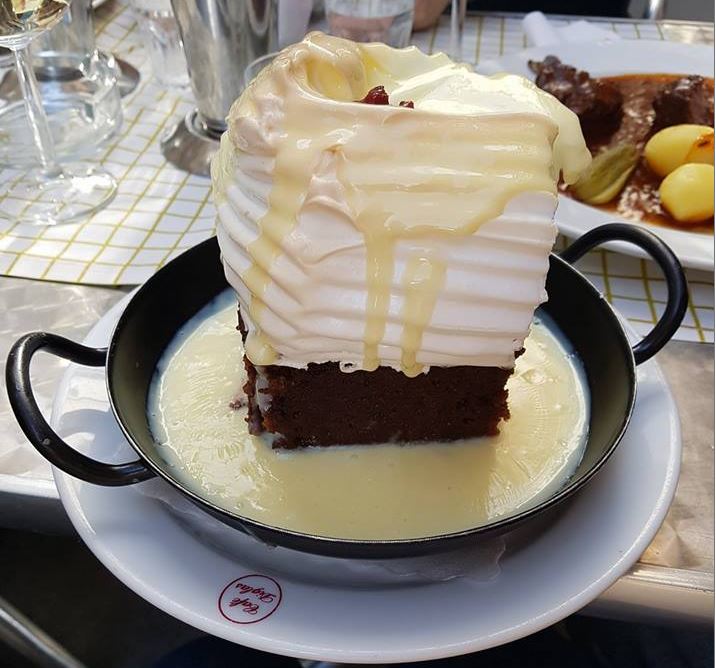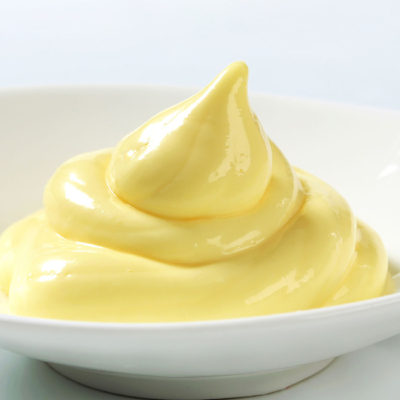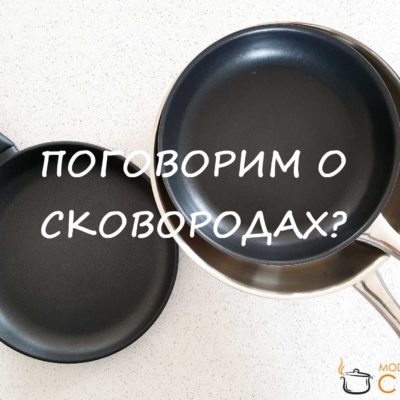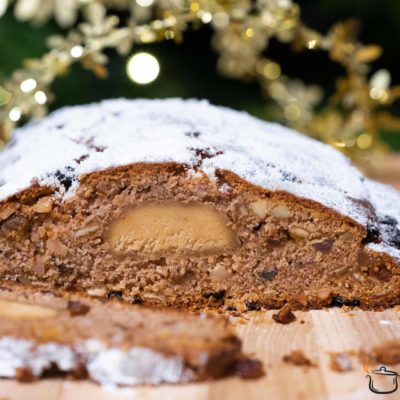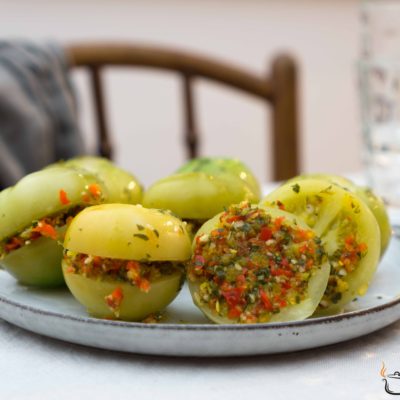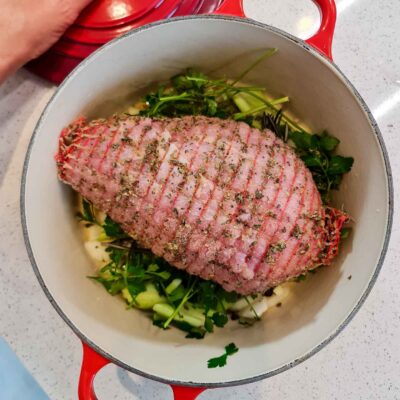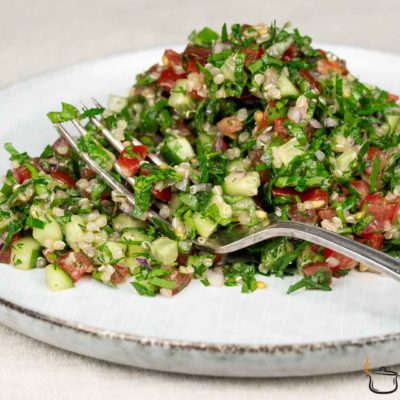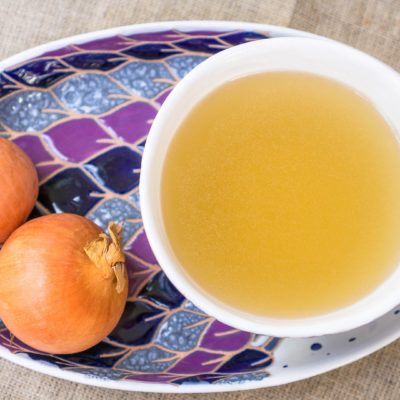What do people eat in Austria? Everyone knows schnitzel and strudel. But besides them, Austrian cuisine is full of other delicious and interesting dishes. I’ll tell you about them and show some pics here, in this new post.
For example, a pretty common food for open-air parties – roasted wild boar, vegetables and potato noodles. We attended a tasting event in a winery in the suburbs of Vienna, where this dish was served at the after-party. For big parties, hosts roast a whole wild boar and then slice it right in front of guests – looks impressing! By the way, boar is more delicious and lower in fat than usual pork, and it’s often served with cranberry jam – such a perfect combination!
Blunzengröstl — Pan-fried Potatoes with Blood Sausage
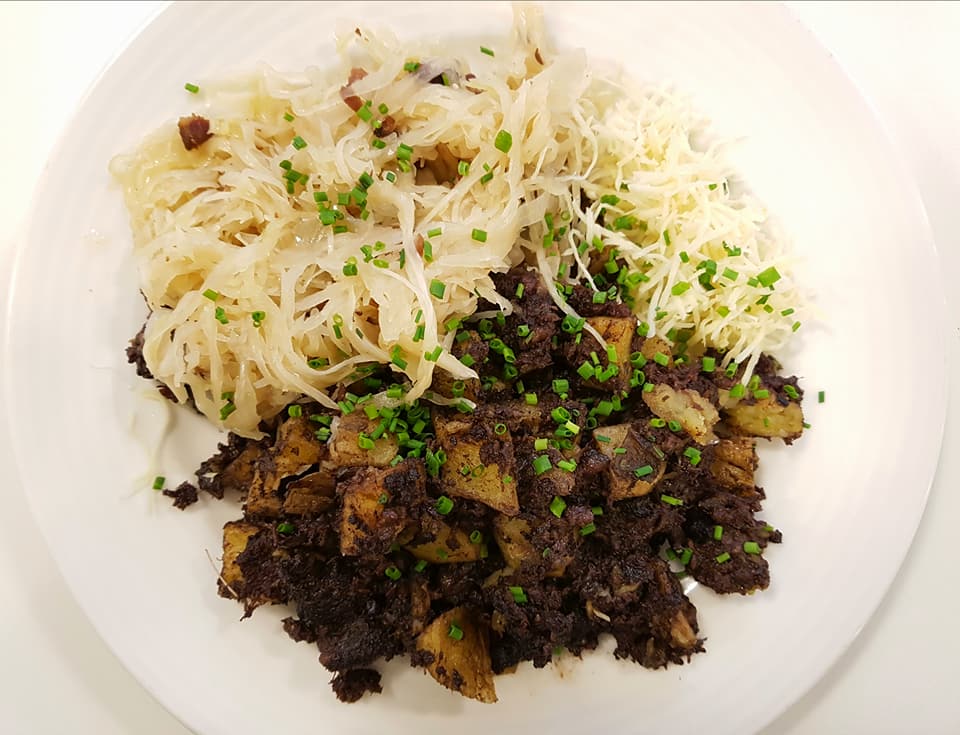
If you the photo didn’t scare you off, and you are still here, here is a very delicious meal of pan-fried potatoes and the Blunzengröstl blood sausage accompanied by a warm cabbage salad. It sounds and looks quite odd, but is very cozy and delicious.
I once mentioned that Austria is a country of responsible breeders. Meat is an important ingredient of Austrian cuisine. Here, people eat meat almost every day and take animal management and welfare very seriously. Other animal products are also an integral part or Austrian culture. One of them is blood sausage – an extremely popular ingredient in Austrian cuisine.
I already posted the blood sausage topping recipe (so cool!), and today I’m presenting you Blunzengröstl – pan-fried potatoes with blood sausage. I took this recipe from an Austrian cooking website. The sausage in the photo is finely chopped, but this recipe makes good-looking pan-fried potatoes with large blood sausage chunks.
Blunzengröstl — Pan-fried Potatoes with Blood Sausage (4 servings)
Ingredients:
2 tbsp lard (or vegetable oil)
100 g onion (cut into thin semi-circles)
60 g smoked products (finely diced)
600 g boiled potatoes (cut into 1×1 cm cubes or 0,5х0,5 cm slices)
800 g blood sausage
30 g flour (for dredging)
5 tbsp olive oil
1 tsp dried marjoram
salt
freshly ground black pepper
Preparations:
Heat the lard or vegetable oil, add the onion, smoked products, and boiled potatoes. Cook until golden-brown. Season with salt, pepper, and marjoram.
Remove the plastic, and cut the blood sausage into 1 cm thick chunks. Dredge each one in flour.
In a separate pan, cook the sausage chunks in vegetable oil until golden brown.
Transfer the sausage to the pan with potatoes, combine them carefully, add salt and pepper to taste.
Serve hot. Enjoy!
Mohnnudeln – Austrian Poppy Seed Noodles
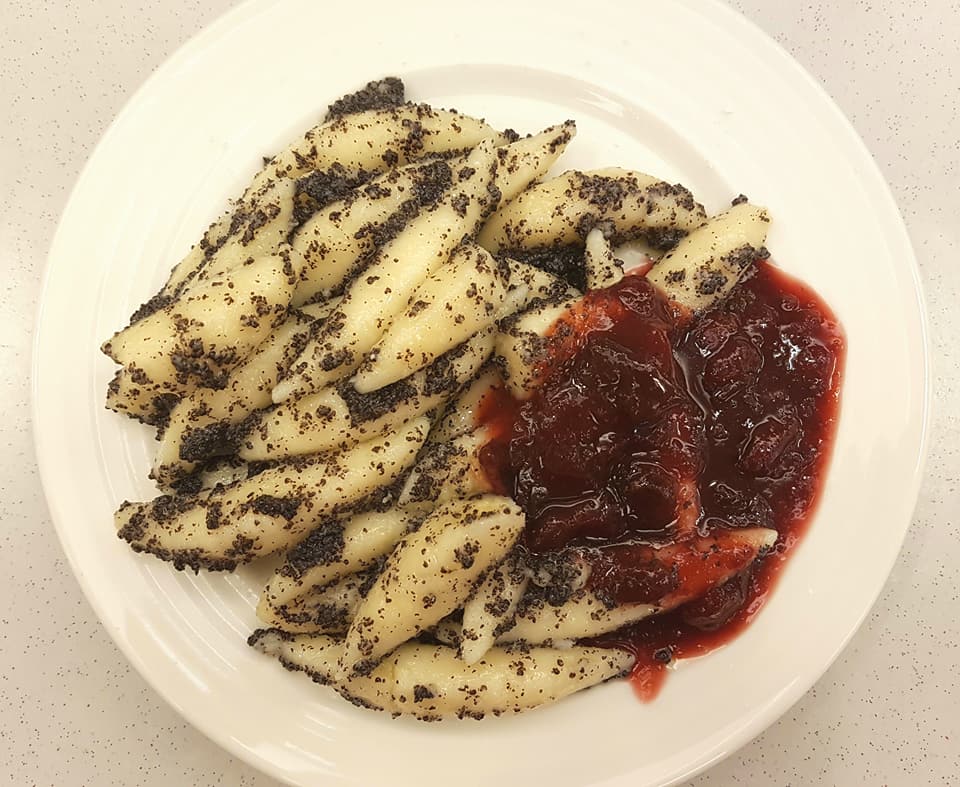
I told you before that a sweet lunch is a normal thing in Austria. It may seem weird to us to have just a dessert for as the main course, but it’s a tradition here. Today I’m going to tell you about one of such ‘desserts’. It’s Mohnnudeln (Mohn – poppy seed, Nudeln – noodles) – Austrian classic. First, I didn’t quite like its appearance but it turned out to be very delicious. By the way, I had Mohnnudeln for lunch today 🙂 It’s made from potatoes, flour, and semolina and served with stewed plums or apples (compote). In the photo, it’s served with plum compote. You can try it out if you like. You can use this recipe I found on an Austrian cooking website.
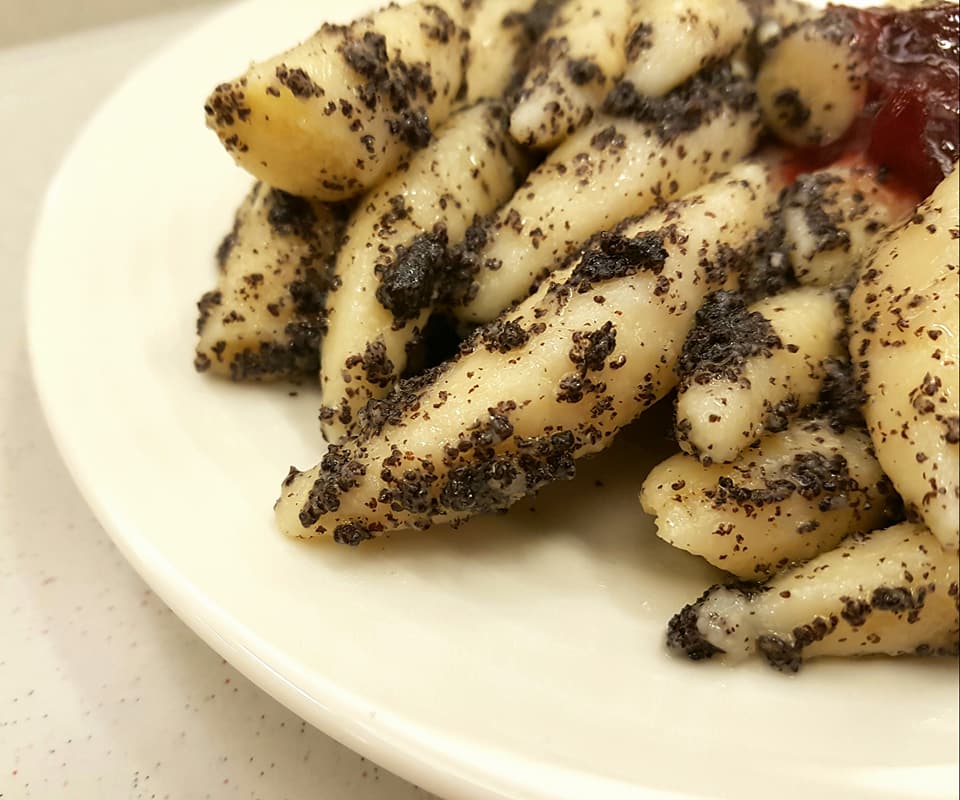
Ingredients:
500 g potatoes (starchy)
50 g butter (melted)
1 egg yolk
100 g flour
1 pinch of salt
50 g semolina
100 g poppy seed (ground)
80 g confectioner’s sugar
15-20 g butter (for cooking)
Preparations:
Boil the potatoes in their skins. Let them cool, then peel. Mash. Mix the potatoes, butter, salt, semolina, egg yolk, and flour.
On a floured surface, roll out the dough and cut into 2 cm long pieces. Form 1 cm wide noodles with tapering ends.
Put noodles into boiling salted water and cook until they float to the top (about 5 min).
Meanwhile, in a pan, melt 15 g butter, add confectioner’s sugar and poppy seed. Mix and cook together for a while. Drain the noodles. Combine them with the poppy seed. Serve with plum compote.
Zwetschgen kompott – Plum compote
Ingredients:
500 g fresh plums
50 g sugar (or less)
100 g red wine and/or water
1 cinnamon stick
3 cloves
Wash the plums. Cut in half to remove pits. Transfer to a saucepan, add the spices and sugar. Cook over low heat for about 10 min. Remove the cloves and cinnamon. Let cool down. Done!
Enjoy!!
Blunzen – Blood Sausage
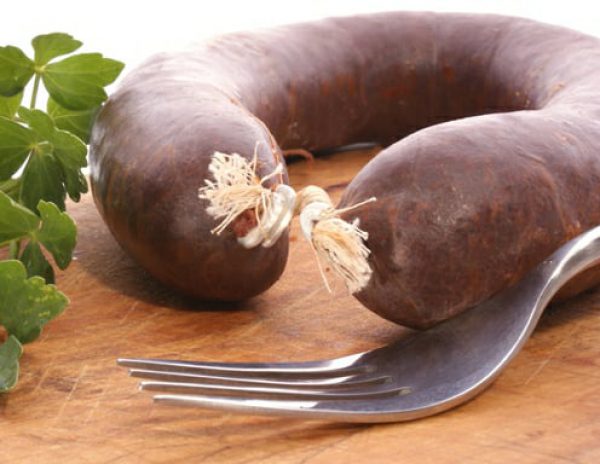
Blood sausages are as popular in Austria as in Ukraine and other European countries. The main ingredient of blood sausages is pig blood, fat and other additions, like flour or rice. The recipe varies by country. For example, in Britain blood sausages are called black pudding which also includes oats. In Spain, where blood sausages are held in high respect, they can be of a few kinds: Morcilla Jabugo – slightly smoked blood sausages with spicy paprika, Morcilla de Arroz – blood sausages with rice, and other kinds of Morcillas can include nuts, raisins, and sugar. In Switzerland, blood sausages are smoked and air-dried. There is a bunch of different kinds of blood sausages in France, the most popular one – Boudin noir – is cooked from blood and giblets.
Blood sausages are known for ages. Even their ancestor was mentioned in Odyssey by Homer. The importance of this product lies in zero-waste and responsible usage of livestock products.
In Austria, blood sausage is called Blunzen. Guess the additional ingredient for Austrian blood sausages! Of course, this is bread crumbs – the ones you’d use for knedles. Bread makes blood sausage texture light and smooth. Such seasonings and salt, pepper, marjoram, thyme, allspice, and ginger are also added.
Blood sausages are consumed either cold with spicy mustard or horseradish sauce, or cut in circles and fried until crispy. Fried potatoes, potato flapjacks, and sauerkraut are best for a side dish.
Blood sausages are also the main ingredient for a most delicious topping – Blunzenaufstrich, the recipe for which I am suggesting you try.
Leberknödel – Liver Dumplings
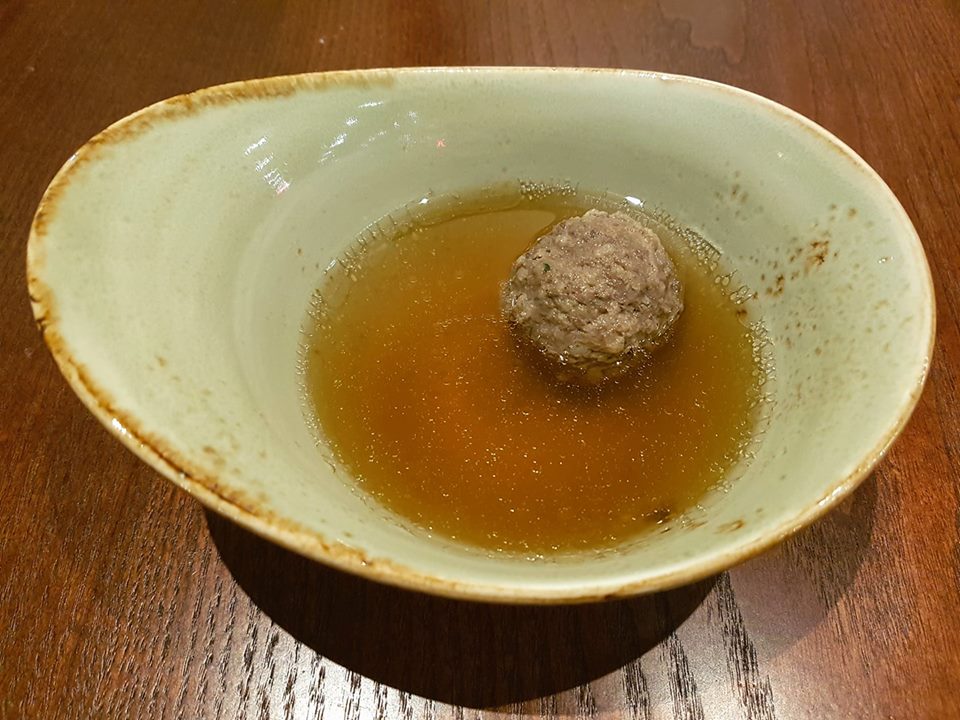
It was the first traditional Austrian dish I tried in Vienna. Just before moving here, I was here on business, and had lunch with my Austrian colleague in a small café. For the first course, the waiter brought us a transparent broth with a grey ball in it. I was kind of confused, and my colleague must have noticed it and explained that it was beef broth with a liver dumpling and that it was delicious. It was indeed! But only if you like liver. Leberknödel (Liver Dumplings) are one of the most popular Suppeneinlage (additions to soups) in Vienna. You can make it at home or buy in a supermarket. But of course, home-made are much better 🙂
Here’s the recipe I found on an Austrian cooking website.
Ingredients:
120 g beef liver
1 clove of garlic
1 medium-sized onion
30 g butter
1 egg
1 parsley bundle
1/4 tsp dried marjoram
50 g breadcrumbs
1 large piece of yesterday’s white loaf
salt
pepper
Preparations:
Soak the bread in warm water. Squeeze it well.
Run the beef liver through a meat grinder or cut finely.
Finely dice the onion and cook in butter until transparent.
Finely chop the garlic.
Finely chop the parsley.
Add the garlic to the onion and cook together for 30-60 sec. Add the parsley and marjoram. Cook for another 1 min. Remove from heat, let cool.
Combine the liver, bread, onion, egg, and breadcrumbs together. Season with salt and pepper to taste. With your hand or food processor, mix until smooth. Let stand for 15 min.
Wet your hand and form the balls.
You can cook them in salted water in advance and serve with soup, or cook them in stock. Simmer for about 10 min. If they are large, simmer longer.
Serve with transparent beef stock.
Enjoy!!!
Scheiterhaufen
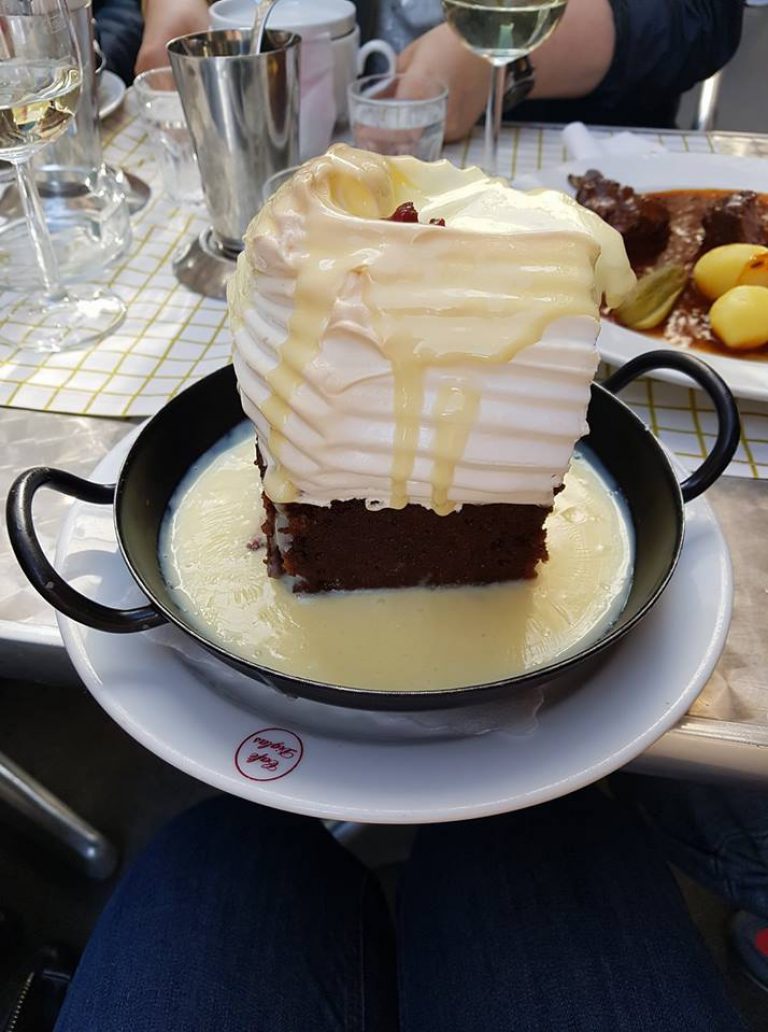
How do you like this dessert?!!
It’s called Scheiterhaufen which is translated as “funeral pile”. It’s a sweet rum-soaked bread pudding made of apples and raisins, topped with meringue and vanilla sauce…
How do you think, did I eat the whole thing?
Mussels in Museum
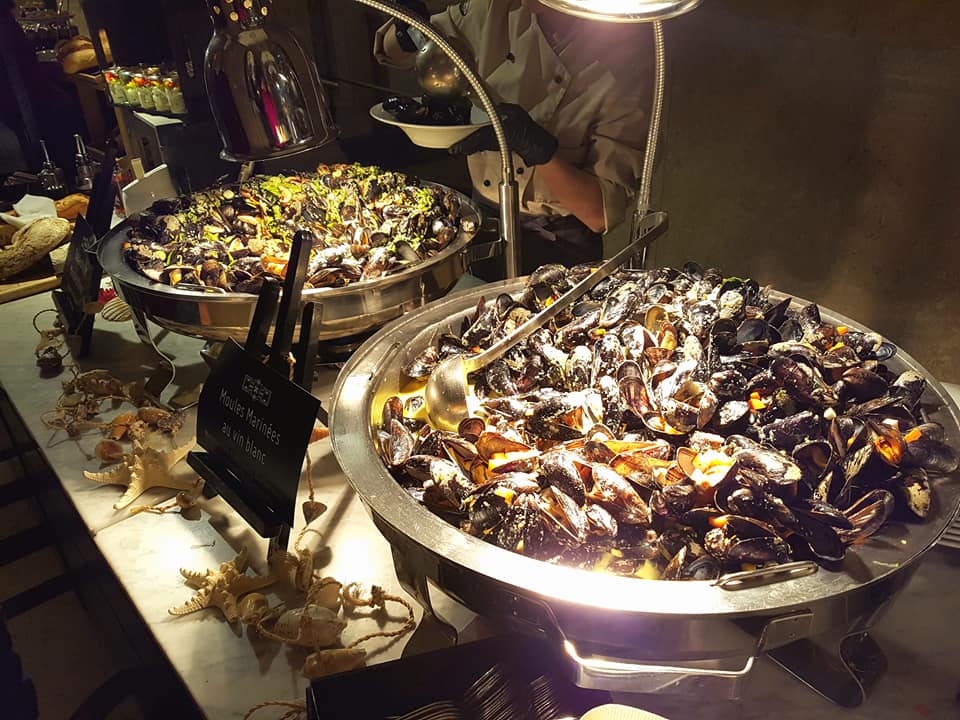
Art, theater, literature, wine, coffee, and food are very much beloved in Vienna. That’s why all of those things can sometimes be combined here.
How do you like this event: “Mussels Dinner At The Natural History Museum Vienna» (Muscheldinner im Naturhistorischen Museum Wien)? I was first somewhat taken aback by such a combination 🙂
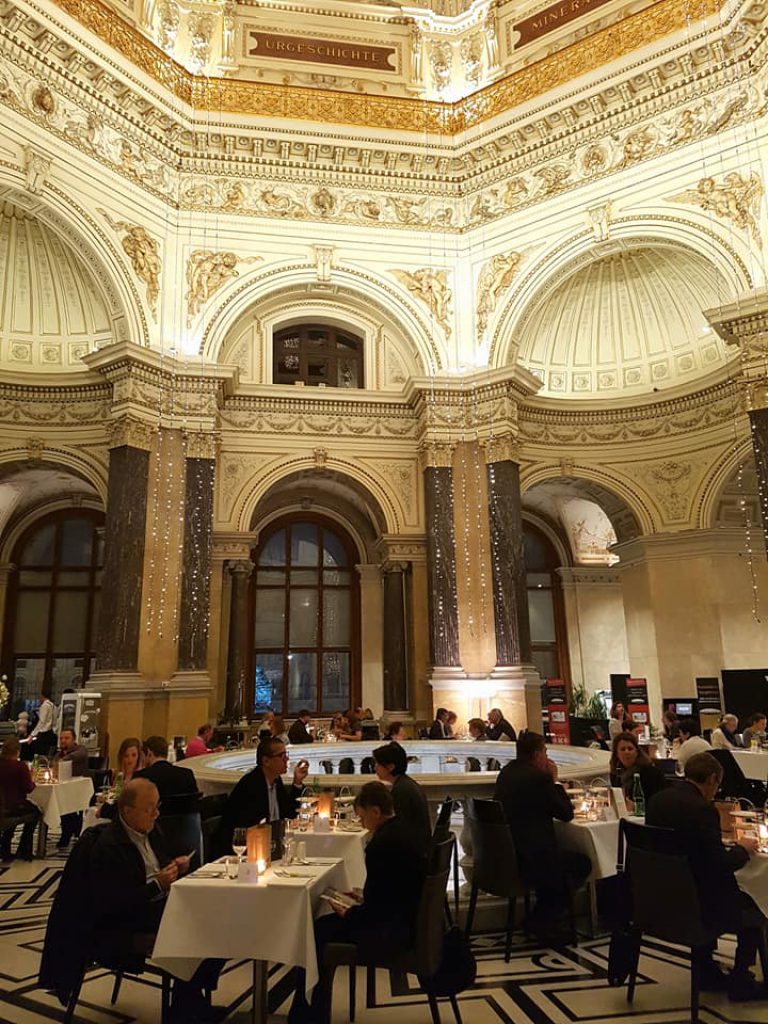
Not everyone knows that under the impressive dome of one of the most beautiful and major museums of Vienna everyone can enjoy fresh and perfectly cooked mussels once a week in a season (from October to December and from January to March). In spring they also held asparagus dinners, and in November – truffles festival.
The leaflet says: “Among the unique exhibits, in a glamorous atmosphere of the dome hall, every Wednesday we serve culinary masterpieces. …A combination of gastronomic and cultural delight, the connection of time and culinary is our philosophy…”
We’ve attended such mussels dinner not so long ago. It feels so amazing to sit just in the middle of the impressive museum’s building, under the fretted dome decorated with frescas and holiday lights. This museum (and its twin, the opposite art gallery) looks like a palace. A myriad of mussels and seafood, champagne, and after that – a look around the museum.
It’s so impressing it makes you admire this wonderful city over and over again.
Eierlikör – Egg Liqueur
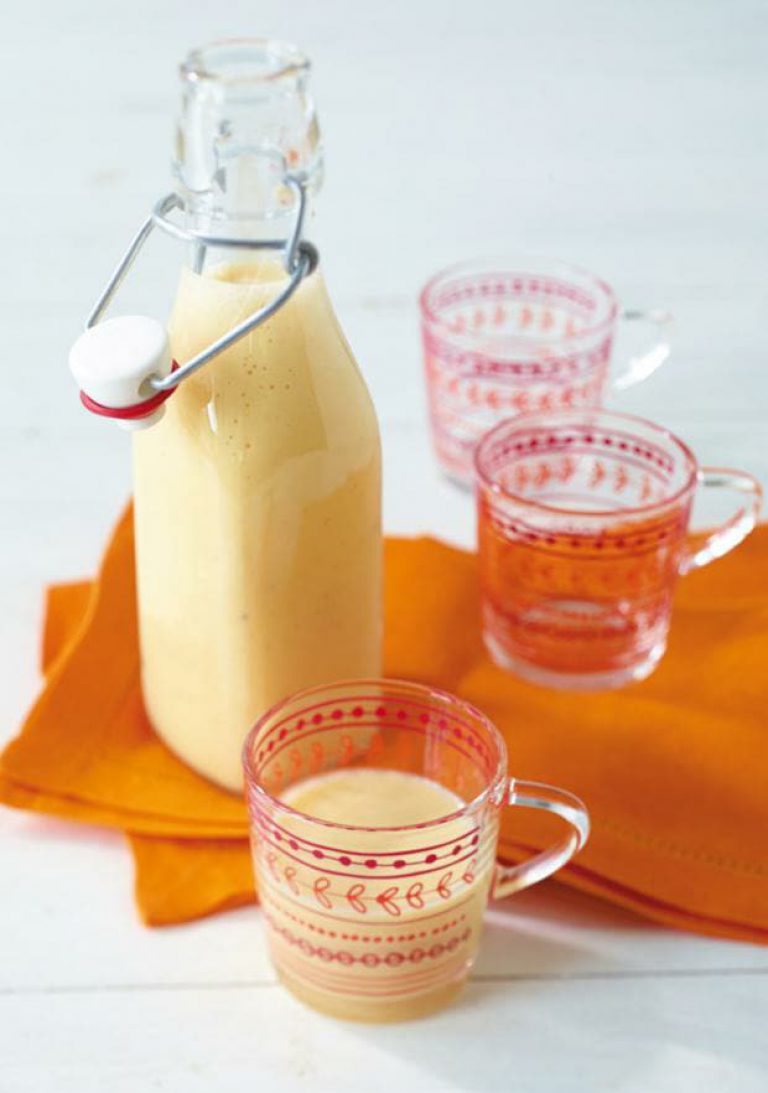
The Dutch egg liqueur Advocaat is very popular. I used to think that its name is somehow connected to lawyers (“advocaat” is the Dutch word for “lawyer”) 🙂 But as it turned out, it name comes from “avocado” that was the main ingredient of a Brazilian alcoholic beverage. Brazilian emigrants failed to cultivate avocados in Austria, so replaced them with egg yolks. Nothing to do with lawyers 🙂
But now it’s not about Dutch or Brazilian people. Austrians love egg liqueur. They call it simply Eierlikör (egg liqueur), and make it commercially or at home. On Christmas, they use it to make punch, and on Easter, it’s the most popular beverage! Before Easter, you can come across bottles of the freshest liqueur in supermarkets.
It’s also used for baked goods. One of the most popular is Eierlikörkuchen – Egg Liqueur Cake. The recipe for one you can find right here.
And here’s a recipe for home-made egg liqueur as made by Austrians:
Ingredients:
6 egg yolks
1 vanilla pod (or 1 package vanilla sugar)
100 g milk
200 g cream (36%)
250 g confectioner’s sugar
250 ml vodka or white rum
Preparations:
In a pot, add the milk, cream, vanilla seeds scraped out of the pod together with the pod. Bring to a boil, stirring. Remove from heat, cover with a lid and let cool down. Remove the vanilla pod. You can remove vanilla seeds too, if you like.
Beat the egg yolks with confectioner’s sugar until white and fluffy (you can do it over a water bath to make the mixture thicker). Add the milk and cream mixture, combine until smooth. Carefully stir in the vodka. Keep stirring until smooth.
Divide into clean bottles. Keep refrigerated for up to 4-6 weeks. For the best taste, let it refrigerate for 3-4 days before serving.
Cremespinat mit Röstkartoffeln und Spiegelei – Spinach Puree with Fried Potatoes and Sunny-side Up
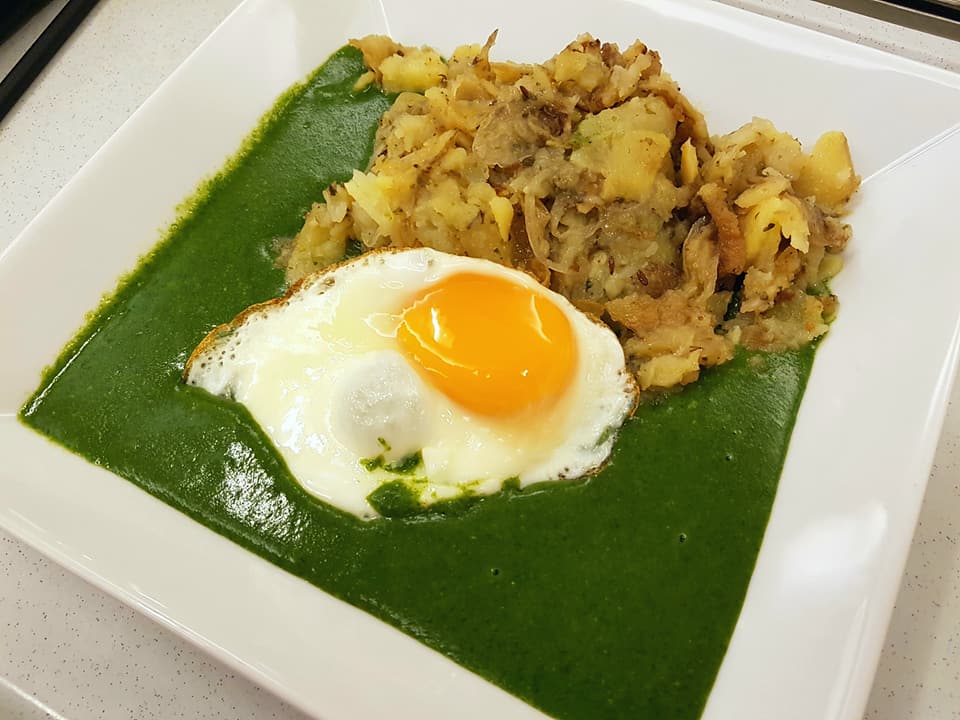
This dish has an interesting appearance and taste. Bright green spinach puree with finely sliced potatoes fried with onion and eggs. It’s served piping hot and gives you warmth on cool fall days.
Ingredients:
(4 servings)
600 g spinach (fresh or frozen)
½ of a medium-sized onion
1 small clove of garlic
20 g sour cream (high in fat)
125 ml milk
20 g butter
pinch of salt
black pepper
pinch of nutmeg
1 tsp starch (if needed)
4 eggs
600 g potatoes
1 medium-sized onion
salt
vegetable oil for frying
Preparations:
Finely slice the potatoes, cut one medium-sized onion into semi-circles. Cook the onion and potatoes until golden brown. Season with salt to taste.
For the spinach puree, finely dice the onion, finely chop the garlic. Heat the butter in a pan and cook the onion until transparent, add the spinach and garlic, cook until the spinach is ready (3-5 min). Season with salt, pepper and nutmeg. Add the sour cream and milk, bring to a boil. Remove from heat and puree with a blender or in a food processor. If the spinach puree is too runny, bring it to the boil again, add starch and let boil for 30-60 sec so that it thickened.
Fry sunny-side ups.
Serve: in a serving bowl, pour the hot spinach puree, place the potatoes on the side, and place the sunny-side ups on top so that when you cut it, the yolk runs out onto the potatoes.
Enjoy!
Ganslessen
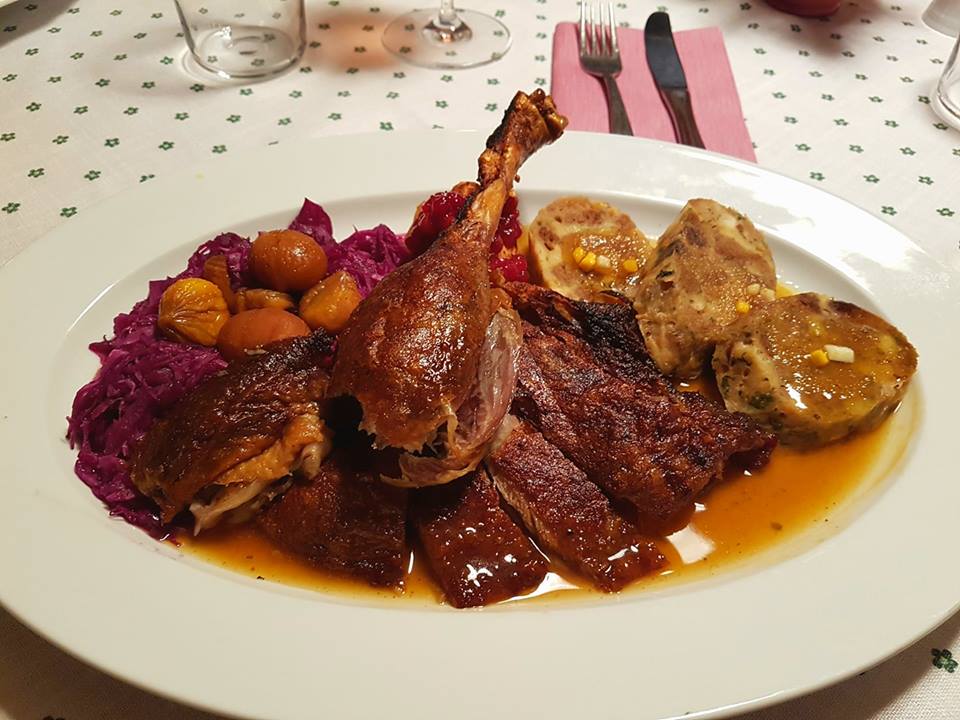
From middle October to November, 11, so-called Ganslessen, or Martinigansl Essen, or in other words feast on a roasted goose is held in Austria. By that time, Austrian farmers breed a great number of geese, and restaurants prepare a special menu. So, why goose and why till November, 11?
The thing is that on November, 11 Catholics celebrate Saint Martin’s day. Saint Martin is a patron of the Burgenland state in Austria, where Saint Martin’s day is a public holiday. However, since people all over Austria love eating and feasting, the tradition is cherished in other states as well. But the most delicious geese are believed to be in Burgenland.
It’s not clear what do geese have to do with all of this, I believe it’s somehow connected with agricultural cycles. But there is a beautiful legend.
Saint Martin was very modest and benevolent, he helped others a lot and dreamt about becoming a clergyman. His family didn’t approve of his dream and he had to join the army. Saint Martin is usually depicted cutting his cloak in two, to give half to a beggar. It’s also another legend that tells that when Martin was a soldier in the army he met a scantily clad beggar. Martin cut his military cloak in half to share with the man.
Let’s get back to the goose. Martin lived an ascetic life and helped people, but was reluctant to become a bishop. So, he hid in a stable filled with geese. The noise made by the geese betrayed his location to the people who were looking for him. Now people eat geese.
A classic Martinigansl is a roasted goose served with dumplings and braised red cabbage, and sometimes caramelized chestnuts.
Sturm Wine
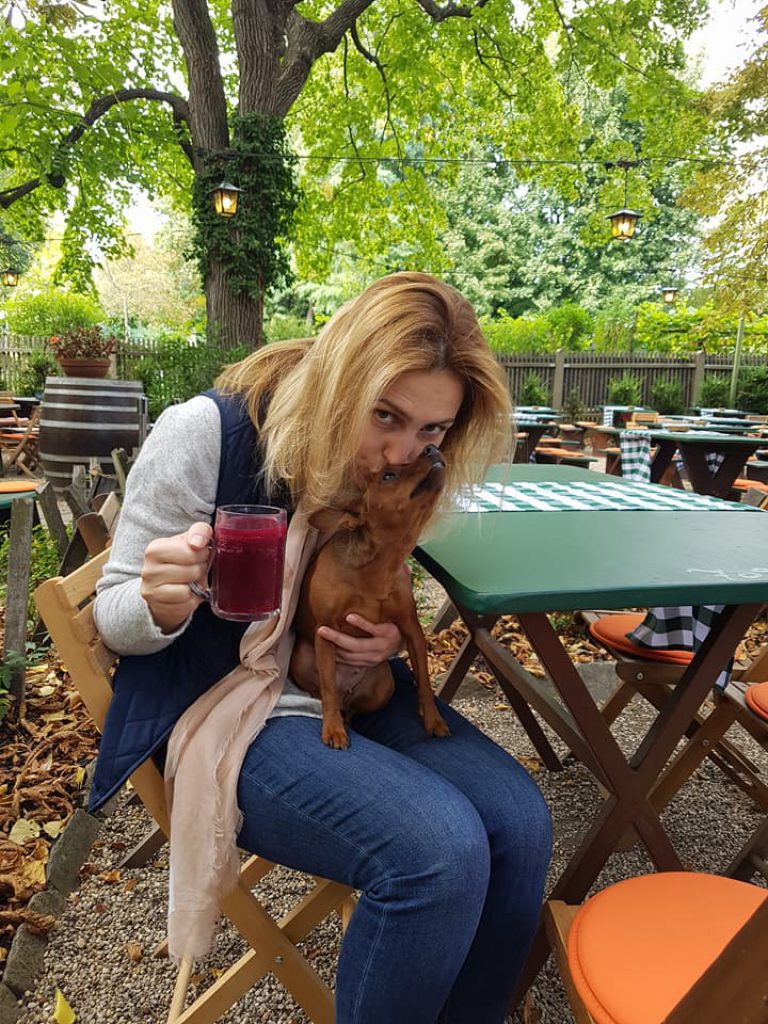
October is a season of young wine in Austria. Here young wines are called Sturm. It’s the time when in all bars, cafes, and heurigers of Vienna you can see signs saying “Sturm”. Viennese love young wine and drink it a lot. There are two main types of Sturm – red and white Sturm. Young wine is basically grape must that hasn’t become finished wine what begin its fermentation. It’s a very sweet and spark beverage. Since young wine never stopped fermenting, its alcohol content keeps increasing and the beverage gets less sweet. So, you can drink Sturm of any alcohol content but you should be careful. In stores, it’s sold in bottles with permeable lids to allow the gas to continuously escape. It should be transported only in an upright position.
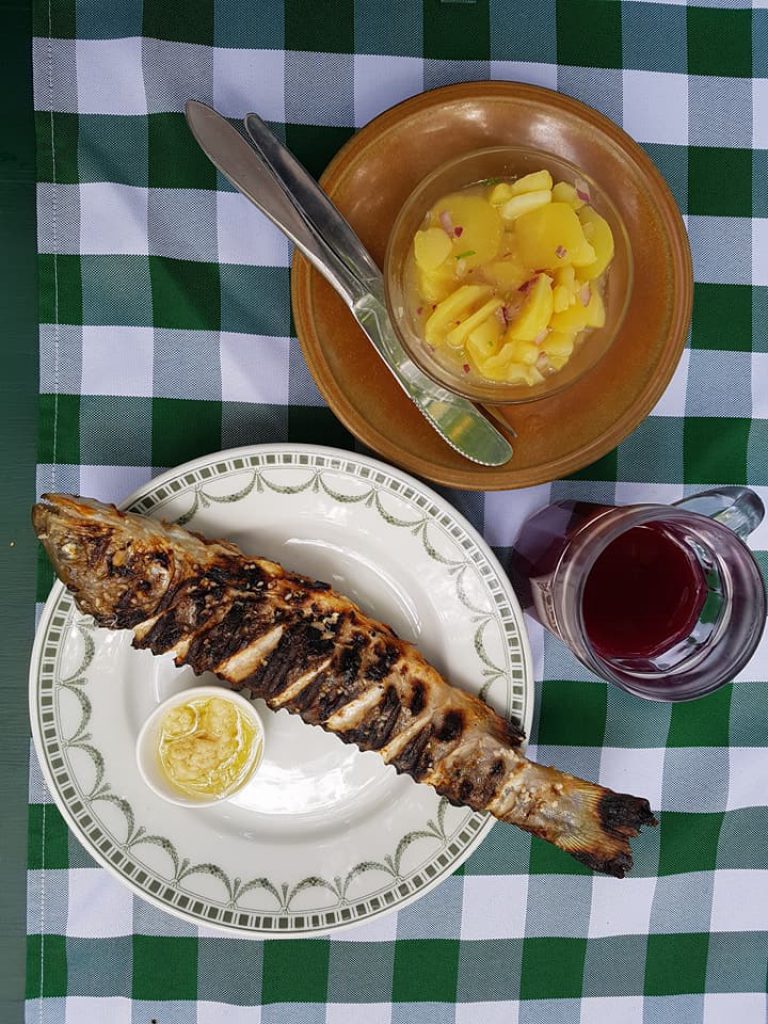
The atmosphere in heurigers are wonderful. In that time of the year, you can also sit somewhere in a park, breathe with fresh fall air, drink Sturm (red is my favorite one), eat grilled fish with potato salad and enjoy your life.
The recipe for a classic potato salad you can find here.
Kärntner Fleischnudel – Carinthian Meat Dumplings
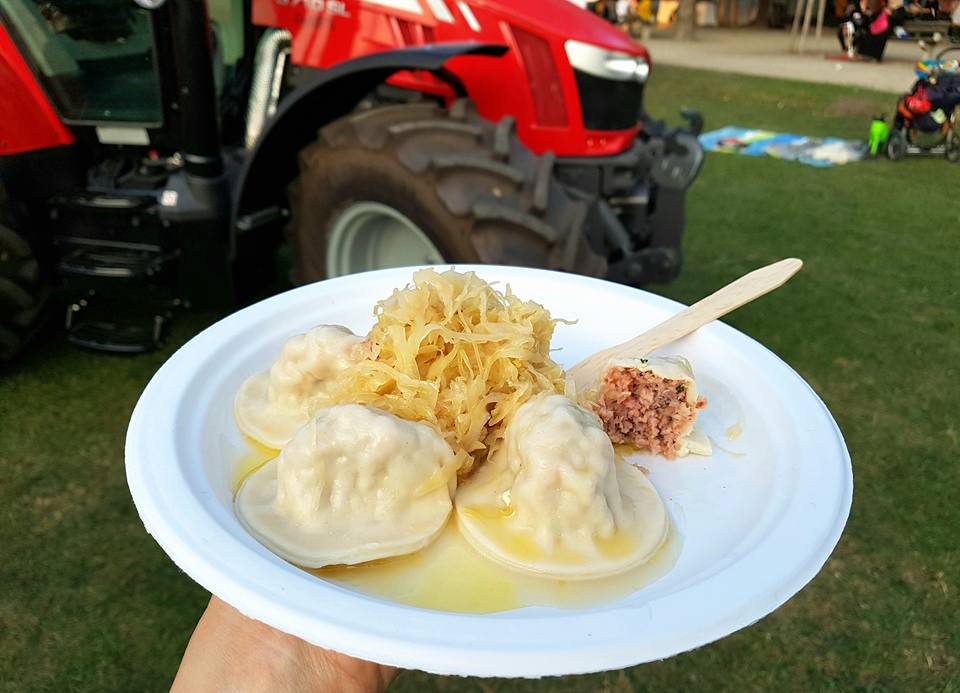
Yet another traditional Austrian dish. It comes from Carinthia, a beautiful Alpine region in South Austria, close to Italy.
Carinthian dumplings can be made with different fillings. The most common ones are cottage cheese and meat. Once on a harvest fest, I Carinthian meat dumplings, and the filling doesn’t only consist of meat. It’s ground smoked beef with fried onion, spices and garlic. Takes like a dumpling with smoked sausage 🙂 It’s served with sauerkraut, and here it’s very sour. In other words, this dish is perfect for smoked products lovers! The cottage cheese variation is less exotic.
If you are interested, let me know, and I’ll post the recipe!
Erdäpfelgulasch – Creamy Potato Goulash
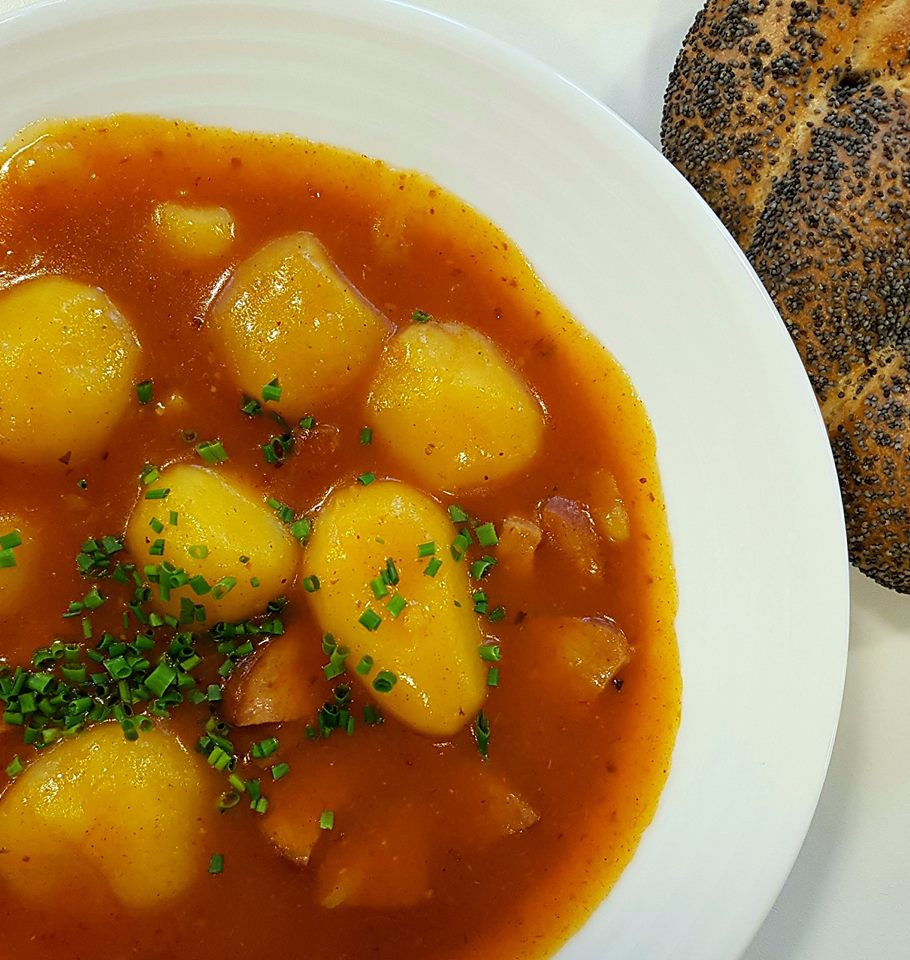
Erdäpfelgulasch, or creamy potato goulash is a truly winter Austrian dish. Traditionally, it’s made without sausage or smoked products, only with beef broth. But now you can come across smoked sausage variant, too. I think you’ll like it!
Erdäpfelgulasch – Creamy Potato Goulash
Ingredients:
4 tbsp sunflower seed oil (or butter)
1 large onion (diced)
2 cloves of garlic (finely chopped)
1 tsp dried marjoram
1-2 tsp thyme (pestled)
1 tbsp tomato paste
20 g sweet paprika
2 bay leaves
5 allspice berries
2 tbsp apple cider vinegar
1 l beef broth
1 кg potatoes (peeled, cut into 4 pieces)
300 g smoked sausage or other smoked products
freshly ground black pepper
salt
100-150 g sour cream
Preparations:
In a pot, heat sunflower seed oil and cook the onion until transparent (2-3 min), add the garlic, thyme, marjoram, and cook together for 30-60 sec.
Remove from heat, add the tomato paste, paprika, bay leaf, allspice, and stir.
Return to heat, add the vinegar and beef broth.
Add the potatoes and bring to a boil. Reduce to simmer and cook for 25-30 min. The potatoes will get softer and the broth will get thinker because of the potato starch.
Cut the smoked sausage or other products into 5 mm thick pieces, add to the goulash and cook for 5-8 min.
Season with salt and pepper. Serve hot with sour cream and fresh baked goods. You can also mix sour cream right in goulash.
Enjoy!
Today's visits: 1.
